The mind blowing single cell and spatial advances revealed at AGBT 2024
In the omics world, AGBT's annual meeting is the equivalent of an Apple event and is the must-attend conference for researchers looking to get a first look at the technological advances in genomics, transcriptomics, proteomics, and beyond.
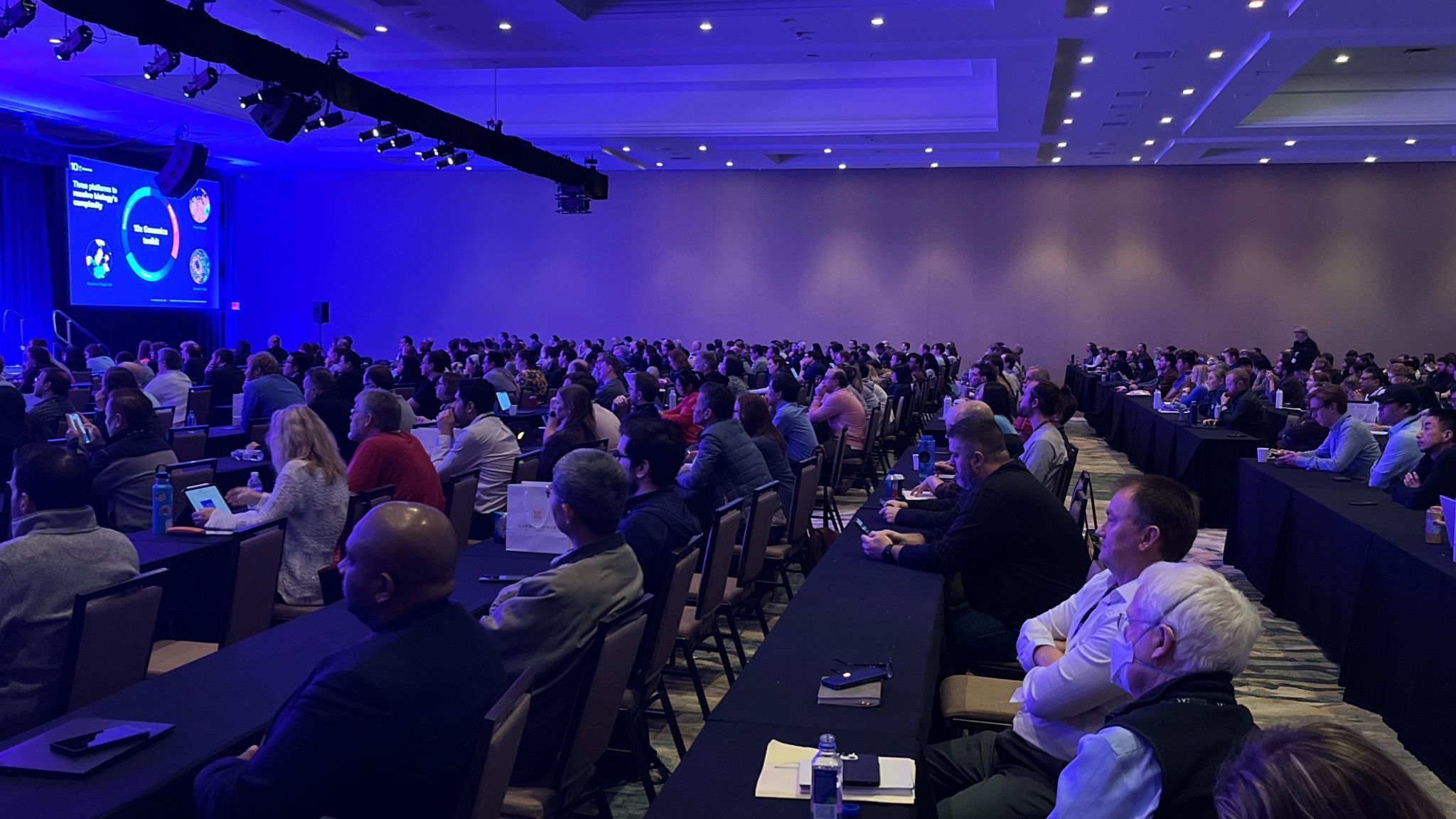
We were particularly excited to be able to announce new products for all three of our platforms at AGBT 2024 and, more importantly, to connect with you—all to help you realize your single cell ambitions with Chromium’s expanding versatility, achieve your spatial explorations with Visium’s HD discovery power, and fuel your single cell spatial pursuits with Xenium’s ultra precision.
Keep reading to get highlights about the single cell and spatial advances coming your way in 2024.
Bringing the resolution you’ve craved to the spatial discovery power of Visium
Since its launch in 2019, the Visium Spatial platform has been allowing researchers to perform unbiased whole transcriptome discovery with spatial context. The 2021 release of FFPE compatibility and the 2022 launch of the Visium CytAssist expanded this spatial discovery power to clinical research and translational samples. One thing you've all wanted is to get these great benefits at the highest resolution possible.
That whole transcriptome spatial profiling at higher resolution is now available with Visium HD. The workshop highlighted many key attributes that make Visium HD an ideal platform for spatial discovery:
- Single cell–scale resolution powered by redesigned Capture Areas with a continuous lawn of oligonucleotides arrayed in millions of barcoded squares without gaps and CytAssist-facilitated precise transcript localization.
- Compatibility with a broad set of human and mouse FFPE tissues and a nearly universal sample prep protocol, which means no optimization needed for most tissues. (Updated September 2024: Visium HD is now also compatible with fresh frozen and fixed frozen human and mouse samples. See the protocols.)
- Highly sensitive probe-based gene expression chemistry used in Visium v2 FFPE chemistry allows HD to achieve comparable or even slightly improved sensitivity.
- Same section H&E and IF integration, which allows gene expression data to be correlated with morphological features, providing orthogonal validation and confidence.
Highlighting how HD maintains spatiality at high resolution, Michael Schnall-Levin, a founding scientist and our Chief Technology Officer, notes:
This is mouse intestine, where we're looking at the crypts, and inside those crypts are paneth cells. We've used the ability to overlay the H&E image in the molecular data to have someone manually annotate regions that have those paneth cells and then look at two genes, Lyz1 and Defa21, that are only expected to be present in those paneth cells, and you can see that confirmed here…I'm just showing you one or two genes…but remember, these are being drawn from data that actually contains nearly 20,000 genes in each of these experiments.
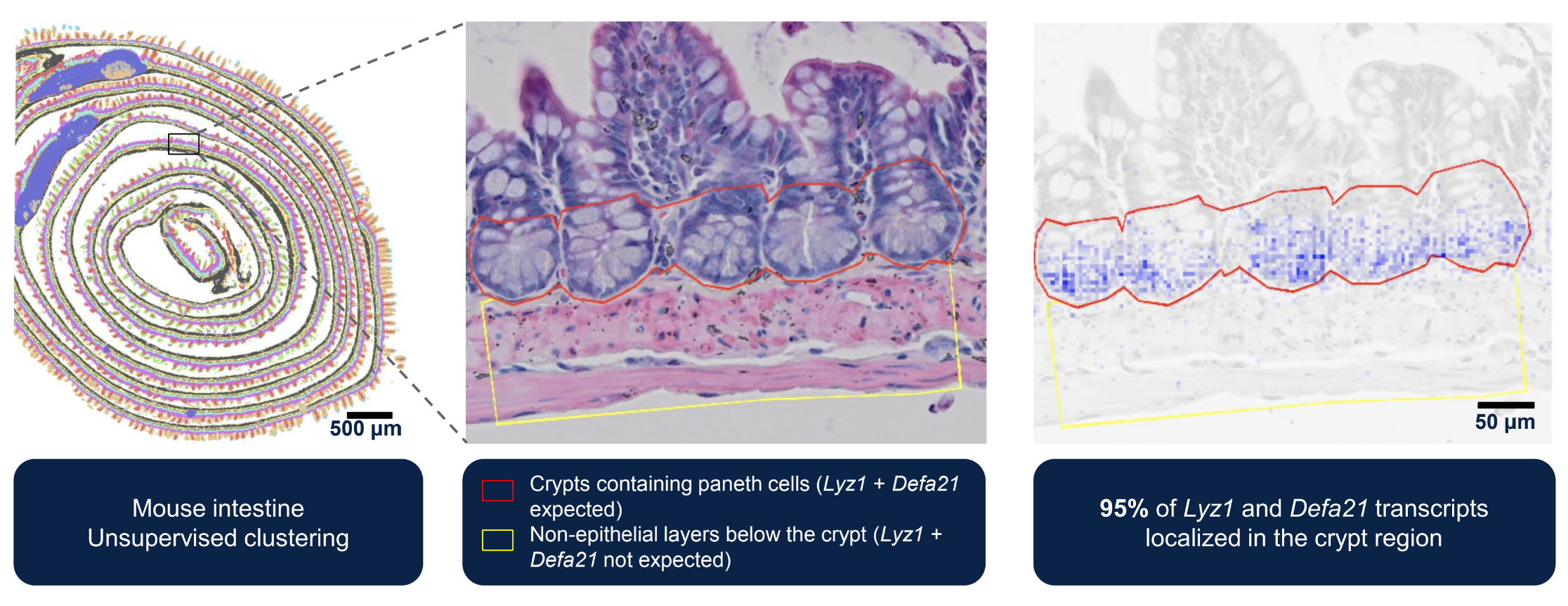
Expanding Xenium capabilities for even more powerful single cell spatial insights
With many customer publications already on bioRxiv and peer-reviewed journals, it can be hard to believe that the Xenium In Situ platform has only been shipping for a little over a year. We’re just getting started with what’s possible with this single cell spatial solution, and the workshop highlighted several advances coming in 2024.
First up, Patrick Marks, Fellow in the Computational Biology division, introduced multimodal cell segmentation capability. This new capability uses a mix of antibodies and a rigorously trained algorithm to segment cells based on staining of the cell boundary (primary), interior (secondary), or nucleus (tertiary). The new multimodal cell segmentation will be initially available later this quarter as an add-on kit for existing panels, but will be incorporated into future panels. This approach has shown great compatibility on a wide range of human and mouse FFPE tissues.
On the benefits of the multimodal segmentation approach, Patrick shared the following:
Here's an example of why this is critical. I'm highlighting some fibroblasts. With the incorrect boundary, they were getting some signal from neighbor pancreatic islet cells, and were being misannotated. When you get the cell segmentation right, you get the elongated morphology and you get the right cell-type assignment.
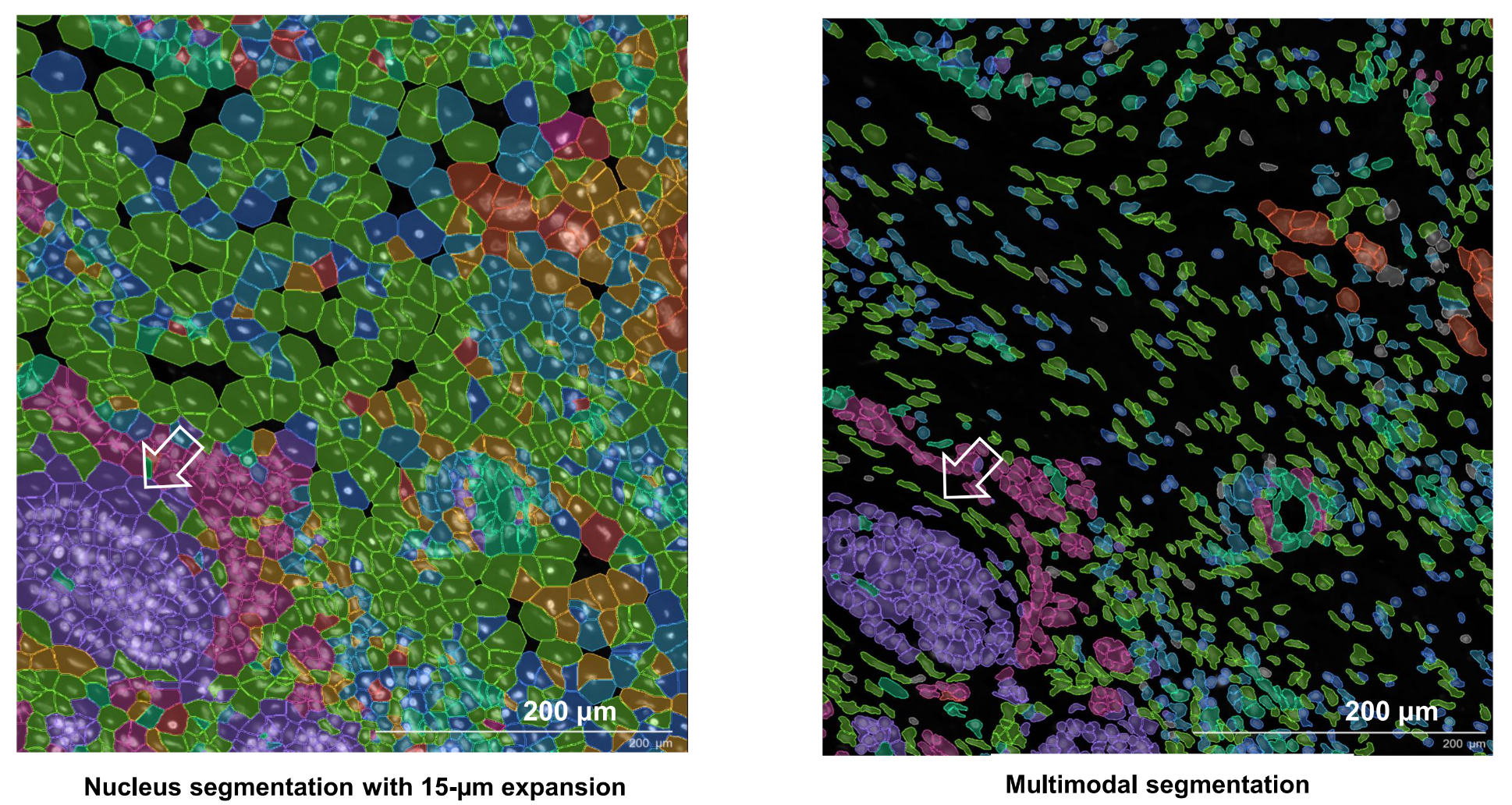
Another exciting Xenium release coming in the first half of 2024 is the 5,000-gene panel (Updated September 2024: Xenium Prime 5K is now available). We recognized the need for researchers to target even more genes using Xenium's single cell imaging approach and wanted to ensure they could do so while maintaining high sensitivity and specificity. Featuring overhauled molecular constructs, optical barcoding designs, and algorithmic stacks, the 5,000-gene panel maintains high per-gene sensitivity. Furthermore, this gene panel can be run on 2 fully loaded slides totaling 4 cm2 of analyzable tissue in 6 days.
Later in 2024, a multiplex protein profiling solution will be available to allow integrated RNA and protein analysis. A 2,000-gene panel will also be featured in the 2024 line up. Long term, 10x Genomics is dedicated to improving scalability and driving down the cost of Xenium experiments, so stay tuned for new updates!
Introducing the next generation of single cell with GEM-X
Since the launch of our first Chromium assay in 2016, our single cell offerings have been steadily growing, expanding both the types of analytes that could be detected and the types of samples that could be assayed. In 2024, that spirit of innovation in single cell technology continues across the Chromium platform. The FFPE-compatible Chromium Flex assay will see new analyte detection capabilities, including intracellular proteins and CRISPR guides. Another major development for Flex is the ability to fix whole blood samples prior to scRNA-seq, enabling more flexible and convenient liquid biopsy studies. The Demonstrated Protocol available on our Support Site outlines the fixation procedure, subsequent isolation of relevant cell types, and more. We are also excited to announce that Demonstrated Protocols for fixation of samples upstream of our reverse transcription–based single cell assays will be available later this year.
And, now, it’s time to talk about the biggest mic drop of our AGBT workshop: GEM-X! Introducing this latest advancement to the Chromium platform, Ben Hinson, Co-founder and Chief Scientific Officer of 10x Genomics, noted:
I mentioned we've been hard at work on Chromium, it's not just Visium and Xenium, we've also been innovating in the background, intentionally on the Chromium assays. When thinking about Chromium, we've gone back to the first principles and we've re-engineered some of the components from the ground up…to make thousands, tens of thousands of chips with a new architecture that's going to work every time in your hands…We've also gone back and revised the chemistries from the ground up.
Built to integrate seamlessly with Chromium X/iX instrumentation, the new Chromium GEM-X Single Cell Gene Expression v4 and GEM-X Single Cell Immune Profiling v3 assays (now available for pre-order) will be powered by GEM-X technology which provides:
- Up to 2x more genes detected compared to previous versions,
- 2-fold increase in cell throughput,
- >2-fold reduction in cost per cell,
- 2-fold reduction in multiplet rate, and
- Cell recovery rates of up to 80%.
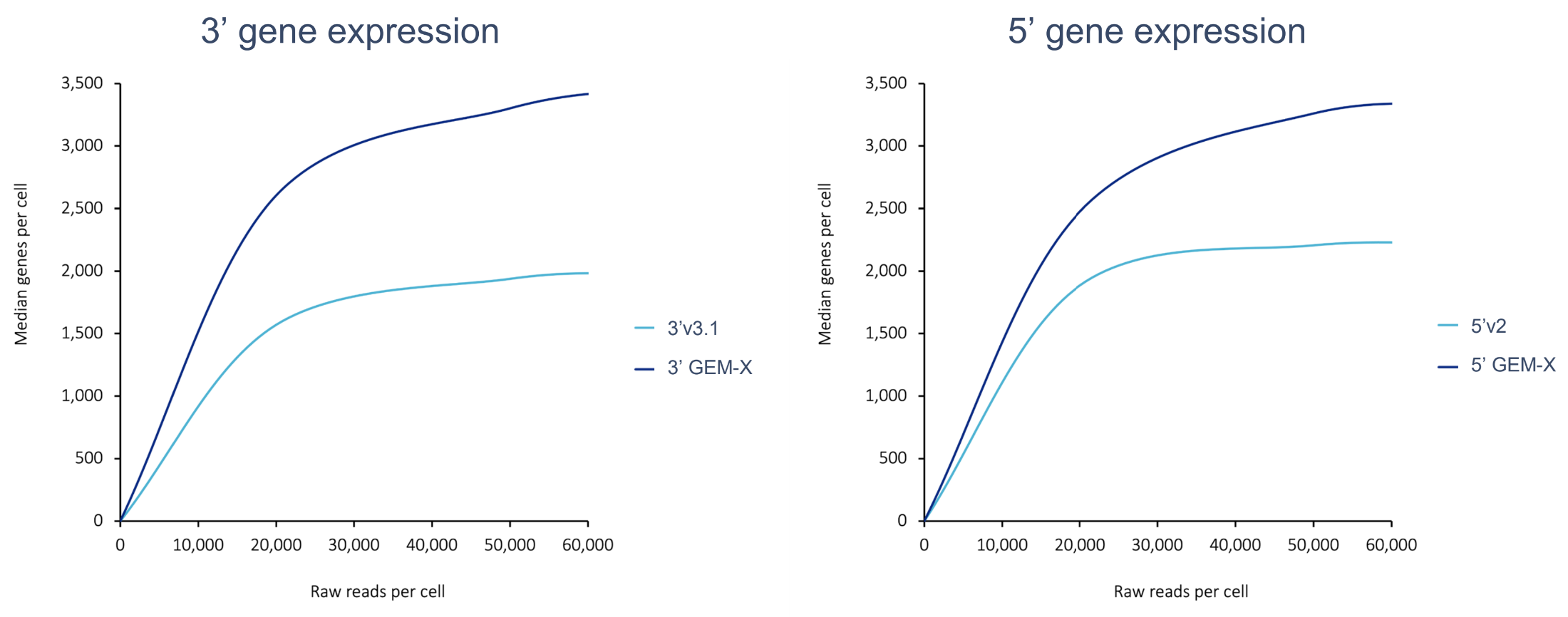
All these benefits combine to enable you to reveal the most accurate view of even the most complex samples. The data below shows how GEM-X enables the capture of neutrophils, a historically challenging cell type for single cell analysis due to their low RNA content.
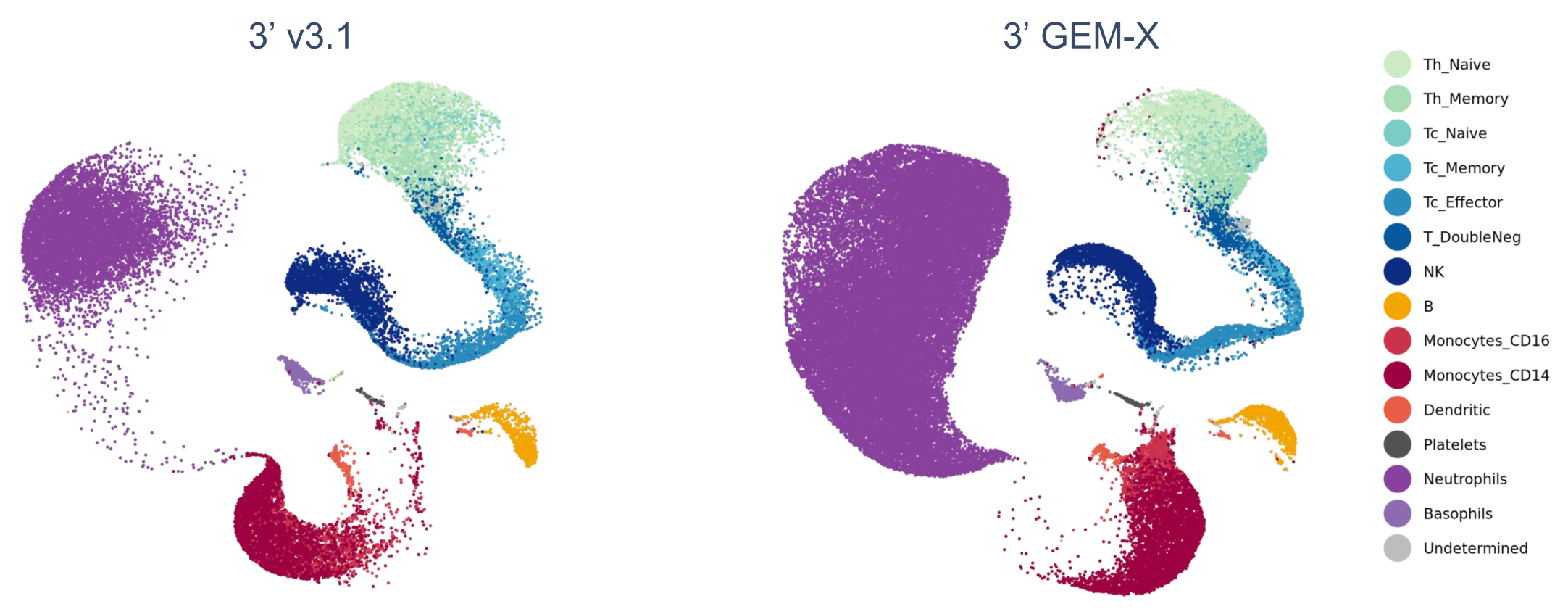
For the 5’ immune profiling kit, the GEM-X advantage also enables more V(D)J information to be obtained, including revealing more unique clonotypes with productive V(D)J transcripts.
It’s all about the WHY
There’s no denying that all of us at 10x Genomics are super excited about these new advancements. The reason for that excitement was beautifully summarized by Sarah Taylor, Senior Director of Applications:
Unraveling the complexity of disease and separating it from healthy biology has been challenging…In Alzheimer's disease, there is a 98% failure rate in drug development…In cancer, checkpoint blockade, which has become a cornerstone in many treatment plans, only provides benefit to a minority of the patients treated. And people with autoimmune disease can go through over 4 years of testing before they get an accurate diagnosis...These are common diseases that are well studied, in well funded areas of research…This highlights that what we do not understand about human health and disease is vastly greater than what we do understand.
There is so much left to learn and we know that researchers like you have made it their mission to make incredible discoveries that will allow better diagnosis and treatments of such diseases in the future. That’s why our passion is to make this possible by creating powerful technologies with the resolution to tackle the complexities of biology.
If you want to experience (or re-experience) the mind blowing reveals from our 2024 AGBT workshop, you can register for an on-demand recording HERE. See you there next year!
*Editor’s note: This blog was updated in September 2024 to reflect new tissue compatibility for Visium HD and the launch of Xenium Prime 5K.*
About the author:

